
Puppy socialisation and habituation: What you need to do

Philippa Short
8 August 2023 | 6 minutes read
Raising a happy and confident canine begins in puppyhood. It’s a key time to teach your pup how to feel safe in the world.
Below, expert dog behaviourist Philippa Short shares the right way to socialise your puppy with a variety of people and animals. You’ll also learn how to introduce them to the different sights, sounds, and smells of everyday life.
- What’s the difference between habituation and socialisation in dogs?
- Puppy socialisation
> How to organically socialise your puppy
> Who to socialise your puppy with - Puppy habituation
> Introducing your puppy to different surfaces
> Introducing your puppy to different toys
> Introducing your puppy to different sounds
> Introducing your puppy to different equipment
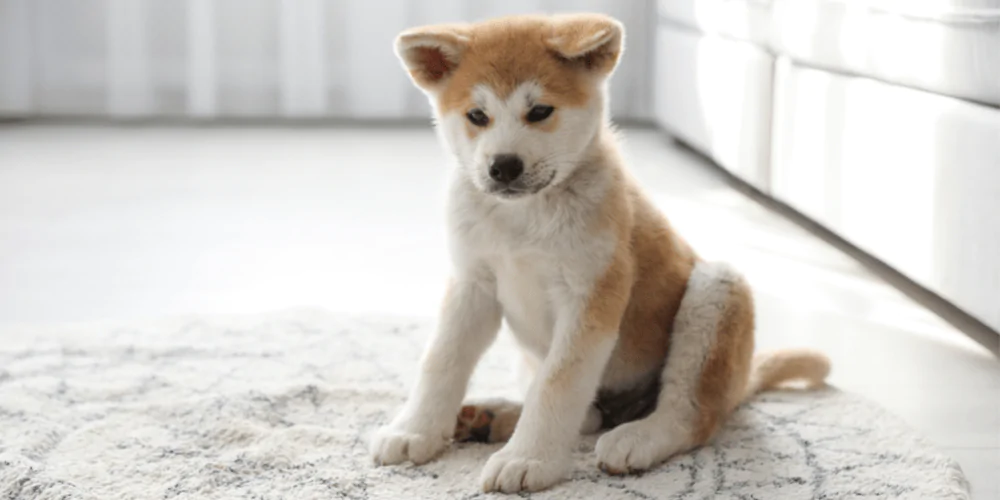
What’s the difference between habituation and socialisation in dogs?
Habituation is teaching your puppy they’re safe in many different environments. You’re working all of their senses so they’re comfortable with many sights, sounds, scents, textures, and surfaces.
Socialisation is teaching your puppy how to safely and politely integrate themselves with different people, dogs, and other animals.
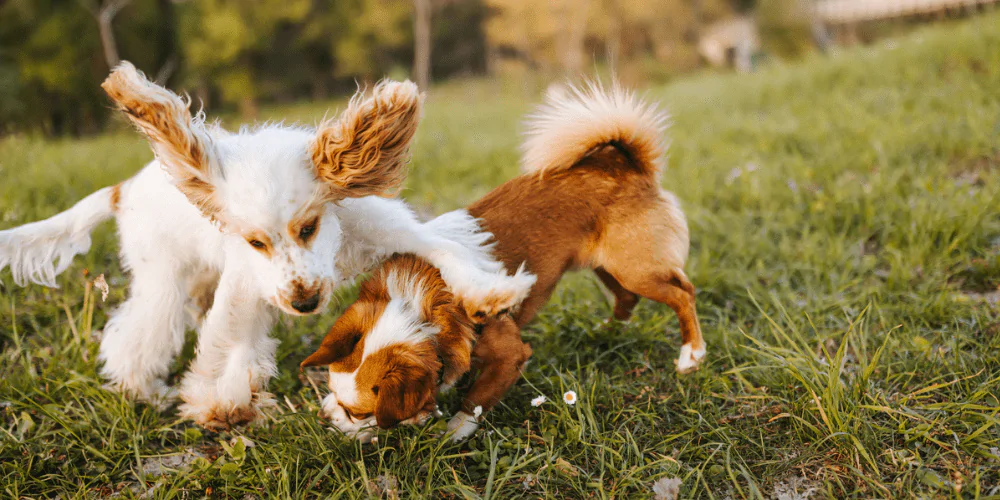
Puppy socialisation
The goal of puppy socialisation is to create a balanced dog who’s calm and neutral about the individuals and animals around them. This means they’re neither worried and fearful nor frustrated and lunging with excitement.
By socialising them as soon as possible, you’re building up their memory library and setting them up to be more confident in life.
When it comes to fully socialising puppies I think there’s too much emphasis on:
- Having lots of people handle your puppy
- Getting them to meet hundreds of dogs
- Making them sniff lots of animals
You’ll certainly want to plan some good and calm interactions, especially with people and other dogs. But your dog needs to be able to trust that you’ll keep them safe. Introductions should be done at a low enough level that there’s no extreme reaction either way.
I don’t want my puppy to believe that it should have full interactions with every person, dog, and animal it sees. This can lead to an overly social and obsessed puppy who then struggles with recall.
So let’s look at a better way to socialise your new canine pal.
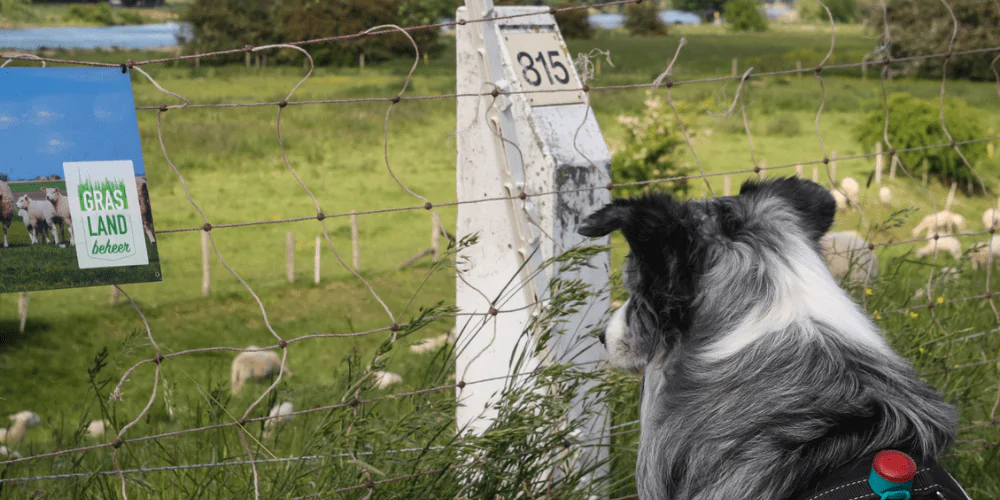
> How to organically socialise your puppy
Organic socialising is letting your puppy hang out in different places so they can watch a variety of people and animals. Your puppy gently sits and takes in all their sizes, shapes, and smells.
I will go somewhere with my puppy daily to let them watch the world, even if it’s just for 20 minutes at a time. Some examples of places you can visit include:
- Coffee shops
- Pubs
- Friends’ houses
- Outside school gates
- Kids playgrounds
- Petting farms
- Wildlife parks
Nose-to-nose contact with animals isn’t needed for good socialisation. Focus more on getting your puppy to hear the sounds, smells, and movements of other animals.
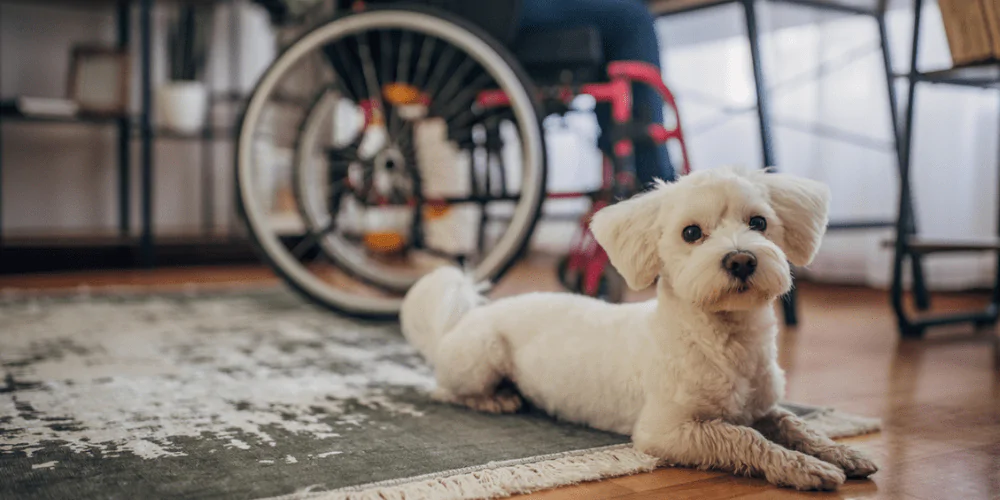
> Who to socialise your puppy with
Variety is the spice of life, especially when it comes to your puppy’s socialisation.
You don’t want your pup to be spooked by or misunderstand other animals if they encounter them when they’re older.
For example, when it comes to dogs, some of the things you’ll want to show your puppy are a mixture of:
- Sizes – small, medium, large breeds
- Coats – types, textures, colours
- Face shapes – flat-faced, long nosed
- Tails – long, short, curled, no tail
The same is true when it comes to humans – your puppy should learn that people come in all shapes and sizes. So let them see:
- Babies and toddlers crawling around, babbling, crying, being noisy
- Young children, teenagers, and adults
- Men and women
- Facial hair (which can be emotionally challenging to puppies)
- Different ethnicities and cultures
- Different clothes and hairstyles
- Disabled individuals who use a variety of supportive equipment
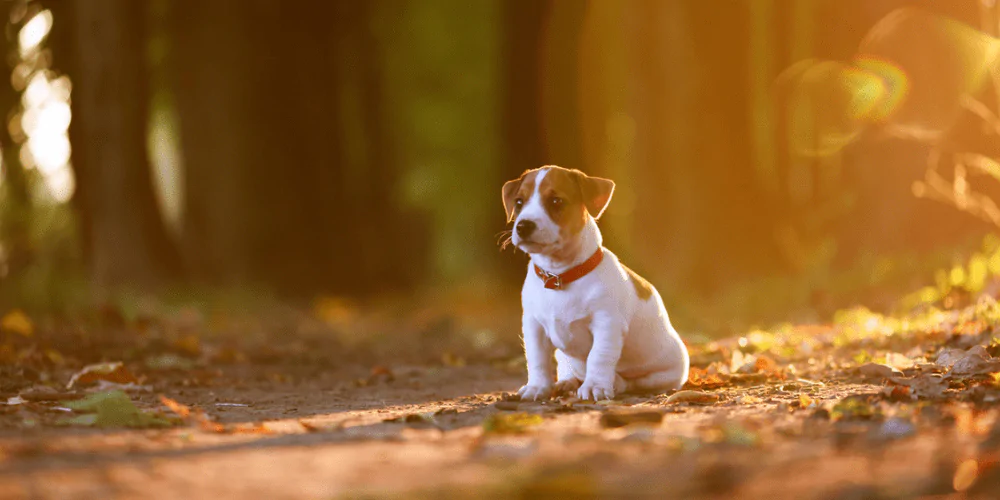
Puppy habituation
Just like socialisation, puppy habituation is all about diversity and slow, careful introductions. The earlier you can show your pup the different environments they’ll come across, the better.
As always, you’re taking an organic approach over being pushy with your puppy.
> Introducing your puppy to different surfaces
Introducing your pup to different surfaces is very underrated but so important.
Depending on when and where your puppy was born, they may only have ever known a small number of surface types.
Organically sprinkle treats over a range of surfaces and let your puppy sniff and forage as they walk across them. It’s a good way to keep them calm as they get used to the new texture under their paws.
You can collect 1m square scraps of surface types and scatter them over the garden for your pup to walk over. Always monitor them to make sure they don’t try and chew any.
Examples of surfaces include:
- Carpet, laminate, vinyl
- Artificial grass, mown grass, meadow grass
- Gravel, concrete, tarmac, paving slabs
- Muddy ground, loose leaves
- Plastic and metal crate trays
- Vet bedding, puppy pads, newspaper
- Tarpaulin, bubble wrap
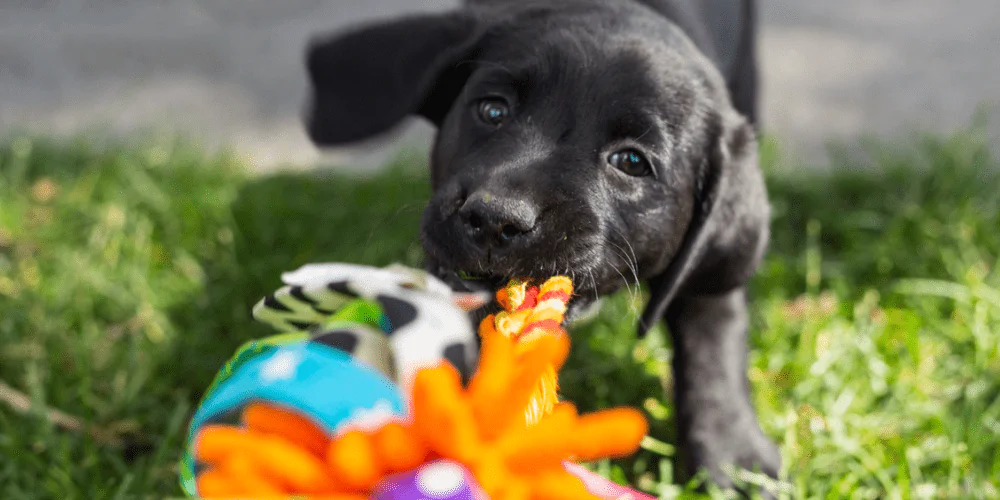
> Introducing your puppy to different toys
Your puppy uses their mouth to explore the world, so it’s vital that you give them a variety of toys to discover and enjoy.
Give them new experiences with toys that are:
- Noisy – crunch, rattle, and squeak
- Textured – rope, rubber, soft fabric, tougher fabrics
- Different sizes – small, bigger, long (that they can chase)
As always, supervise your puppy with any toy and stay away from ones with small parts. Throw away any broken or damaged toys as these could be choking hazards.
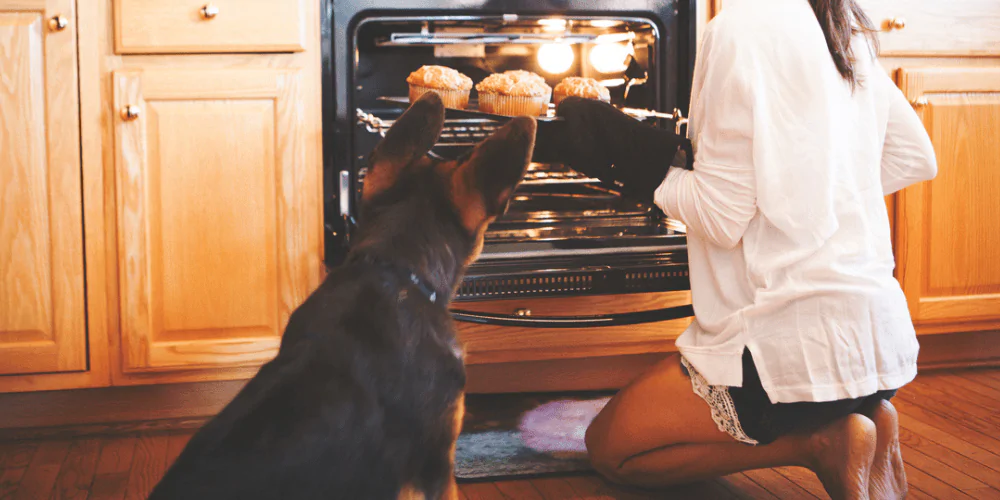
> Introducing your puppy to different sounds
Desensitise your puppy to different sounds by playing them on a loop at a low volume. This can be done while your pup is playing, cuddling, eating, or sleeping.
The volume should be high enough for your pup to hear but not show any signs of being upset or worried. You can use sound apps and videos to play noises that aren’t easily available at home.
Here’s some sounds to desensitise your puppy to:
- Washing machine (different spin cycles), tumble dryer
- Oven fan, hob extractor
- Air conditioning, cooling fan
- Hairdryers
- Vacuum cleaners
- Television
- Music
- Fireworks, Christmas decorations
- Traffic – cars, buses, motorbikes, lorries, models, cyclists, joggers, trailers
- Kids
Hang out with your puppy in places where they can experience these sounds and store them away in their memory library. So when they hear them again in later life they can recall these memories and not feel any fear.
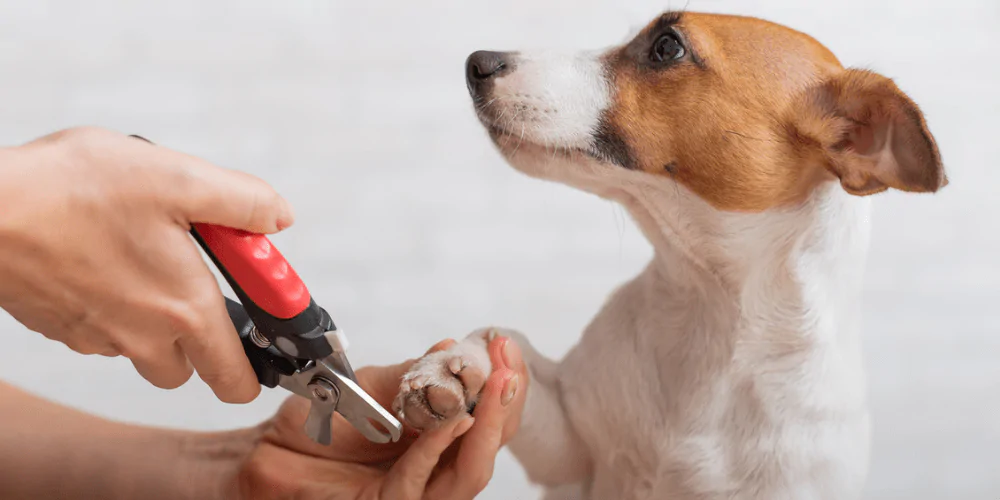
> Introducing your puppy to different equipment
Equipment will play a big part in your puppy’s life and they need to be comfortable with a wide range of things:
- Eating and drinking – using bowls and containers made out of metal, china, glass, plastic, and cardboard
- Travel – going on buses, trains, in cars (or whichever may be appropriate)
- Walks – wearing a harness, collar, and lead
- Grooming – getting showered, shampooed, tail dried, blow dried, brushed (combs, bristle brush, pin brush, slicker brush)
Don’t forget to also encourage your puppy to climb over, under, up, and down things. Make sure these places are low-lying and accessible to help look after your pup’s joints.
You can sprinkle treats in and around areas to allow them to explore and get used to banging and crashing.


